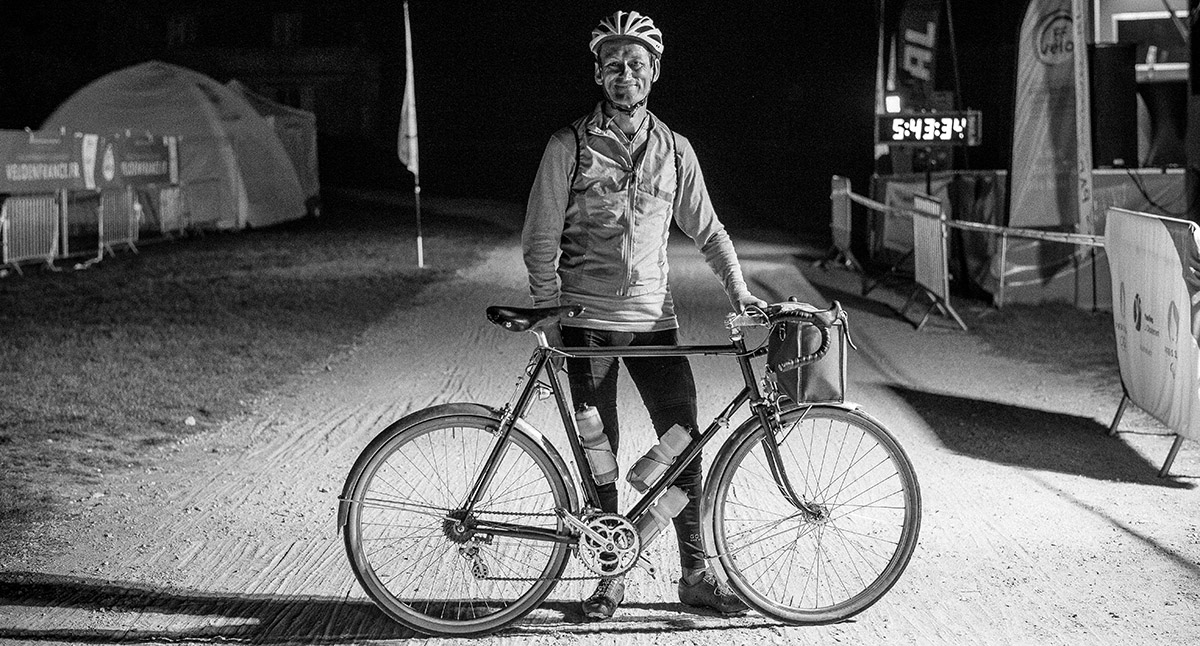Pain-Free Paris-Brest-Paris
Riding 1200 km (750 miles) almost non-stop is never going to be easy. That’s one reason Paris-Brest-Paris, the world’s oldest long-distance event, is held only every four years. There’s enough time in between to forget how hard it was, yet it’s short enough that we remember the lessons from the last PBP and can apply them to the next one.
Last year was my seventh Paris-Brest-Paris, and I’m proud to say that I’ve finished them all. Each was different, each was a challenge, all have been memorable. Last year’s ride was hard for me. It was hot, my legs were having an ‘off day’ for the first 1000 kilometers, but things came together at the end, and I had a great ride over the last 200 km, and finished in 60:05 hours. (The time limit is 80, 84 or 90 hours, depending on the start group.) Most importantly, there was no pain, no discomfort, no lasting damage of any kind.
In fact, just six weeks after PBP, I headed to Arkansas and rode the Arkansas High Country Race—800 kilometers (500 miles) mostly on rough gravel. And I had a blast there, too. To put it in simple terms, I love to ride hard, I’m even willing to struggle a bit, but I do not want to suffer. That’s why I like the photo above, taken at the finish, after riding for 2 days and 3 nights. I’m tired, but the smile is real. It’s been fun.
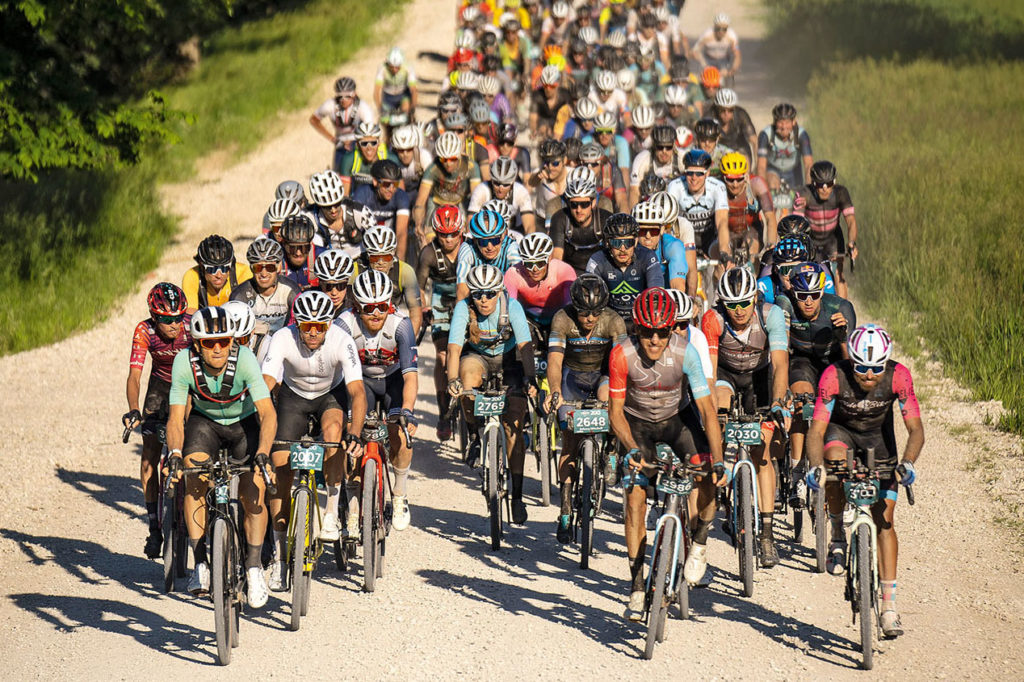
Unfortunately, preventing discomfort isn’t something the mainstream bike industry spends a lot of time thinking about. They may offer some shock-absorbing inserts and other placebos, but their focus is on other things. That’s understandable: Pro racers are pedaling so hard that their bottoms barely touches their saddles. There is almost no weight on their hands, because their powerful pedal strokes push their bodies upward. And a pro race is over after just a few hours. Even in Unbound, the 200-mile gravel race across the Flint Hills of Kansas (above), the fastest riders finish in just 10 hours.
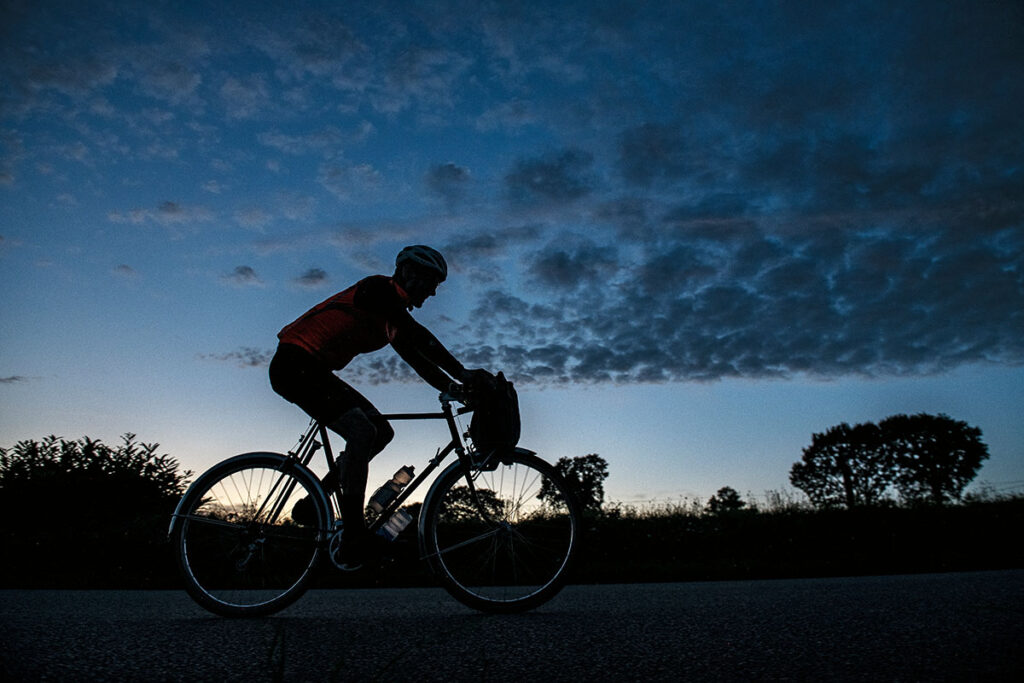
Compare that to Paris-Brest-Paris, where I spent 60 hours on the bike, with just two 30-minute sleep breaks. Or the Arkansas High Country Race, where I rode for 42+ hours without ever stopping longer than 15 minutes at a time. In fact, even pro racers, when they ride ultra distances, are often surprised at the toll this takes on their bodies. The same racers who can ride an entire Tour de France with barely a whimper suddenly are faced with saddle sores, foot problems, and nerve damage in their hands.
How do you prevent numb hands (or worse), aching shoulders, foot pain, and saddle sores? I’m sure everybody’s experience is different… For me, the bike has a lot to do with it. I’m perfectly happy to ride mainstream bikes (and components) for shorter rides, but when it comes to ultra-long distances, I prefer a bike that’s totally dialed for me, my body, and my riding style.
As far as comfort and pain prevention is concerned, there are two parts that are equally important. The first is reducing the vibrations that cause discomfort. The second is ergonomics—making sure the bike and all its contact points fit my body perfectly.
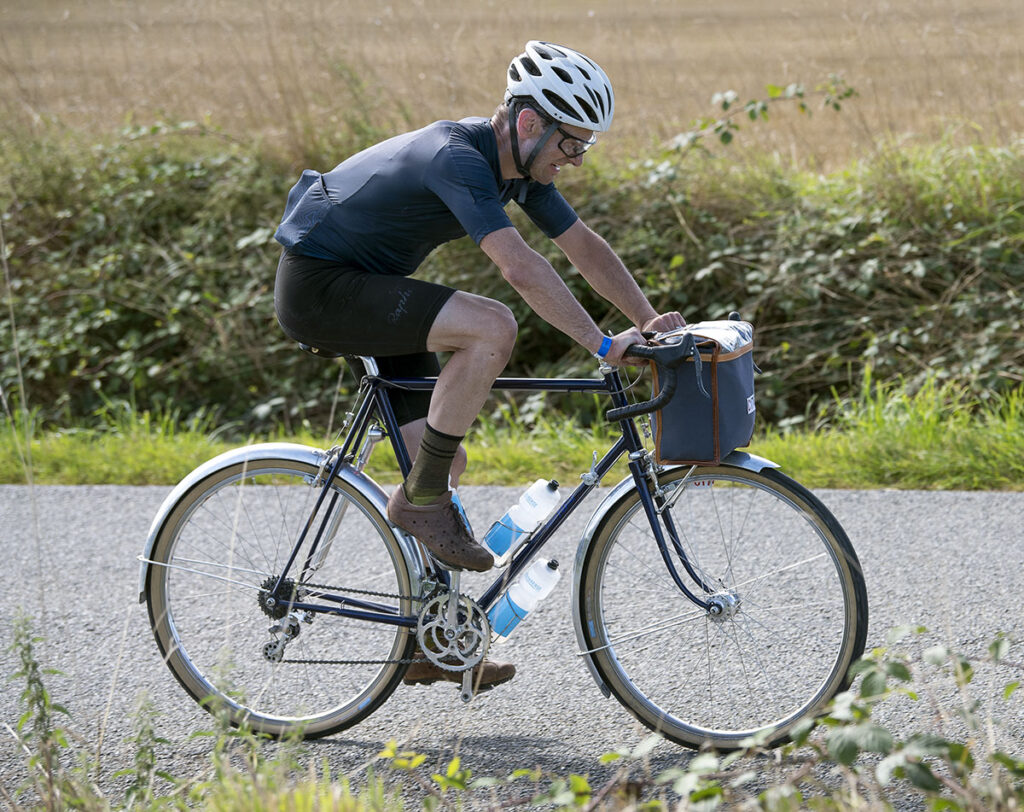
Vibrations
The vibration part is pretty easy. You’ve probably already guessed it, tires (and pressure) are the most important component here. Supple tires are a win-win in this respect, as they are both faster and more comfortable. Wide tires reduce vibrations further, without giving up any speed. Running the right pressure is just as important. For PBP, I ran 42 mm tires inflated to 35 psi (2.4 bar)—the ‘soft’ pressure in the Rene Herse Tire Pressure Calculator. For me, 42 mm tires are the perfect size for PBP. I’ve ridden wider tires in paved brevets, but they did not add comfort. I’ve also ridden PBP on narrower tires—my first PBP was on 25s—but both comfort and speed suffered on the rough asphalt that covers many of the backroads of Brittany.
Compared to tires, everything else is secondary. The reason for this is simple: It’s most effective to absorb vibrations at their source. Once the entire front wheel (or even the entire bike) is moving up and down 100 times per second, the forces are just too great to deal with effectively. That’s why shock-absorbing inserts, padded bar tape or thick gloves don’t work as well to absorb vibrations. That’s not just theory, but something we also found when we measured suspension losses with power meters. (Vibrations aren’t just uncomfortable, they also slow you down, so you can measure how much vibrations are absorbed by just looking at the power they sap from your forward motion.)
Padded bar tape and gloves can help reduce pressure on your nerves—especially if your handlebars don’t fit your hands well (see below).
Ergonomics
Let’s look at the second part, ergonomics. Here the first, and perhaps most important part, is bike fit. You want a bike that’s comfortable—a bike that’s perfectly adapted to your riding positions for various power outputs. Once you’ve got that, it’s key to dial in your contact points so they fit your body: saddle, handlebars and pedals/shoes.
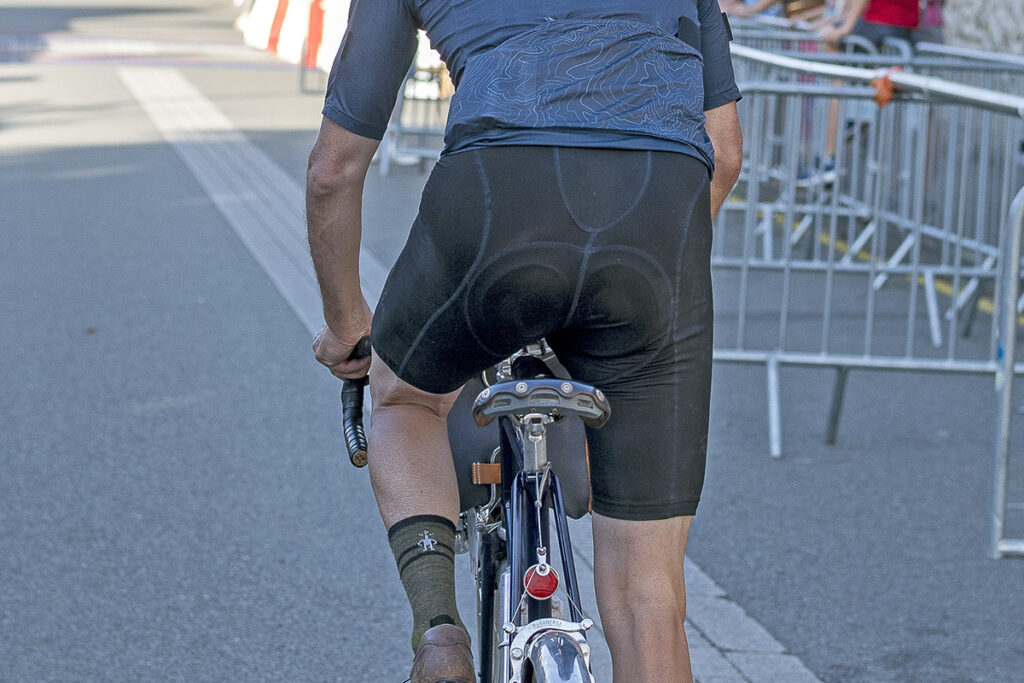
Saddle
The saddle is the first contact point most riders think about, and for good reason. You’re sitting on it for a long time, and the only way to relieve any pressure is by standing up on the pedals, which will fatigue you quickly. Many long-distance riders prefer leather saddles. These saddles shape themselves to the rider’s anatomy, so they tend to be supremely comfortable once broken in—at least for most riders. Some riders have found plastic-shell saddles that fit their bodies—it’s all a matter of experimentation.
I was running a well-used Berthoud Aravis saddle at PBP. In fact, the same saddle already had seen the 2019 PBP and many other rides and brevets. It has little divets where my sitbones go, and it fits my anatomy perfectly.
The Aravis has titanium rails that are supposed to help a bit with shock absorption. I can’t say I notice a huge difference. (See above about absorbing vibrations at their source.) It’s really the super-high quality leather that makes all the difference. In the past, I’ve used another big leather saddle brand, but those saddles were a little hit-or-miss: Sometimes, I’d break in the saddle over 1,000 miles or more, only to find that the leather then sagged and stretched, and the saddle wasn’t comfortable for long. The leather on Berthoud saddles takes much less time to break in, but then it remains comfortable for a very long time. And if the leather top ever does wear out, it’s easy to replace.
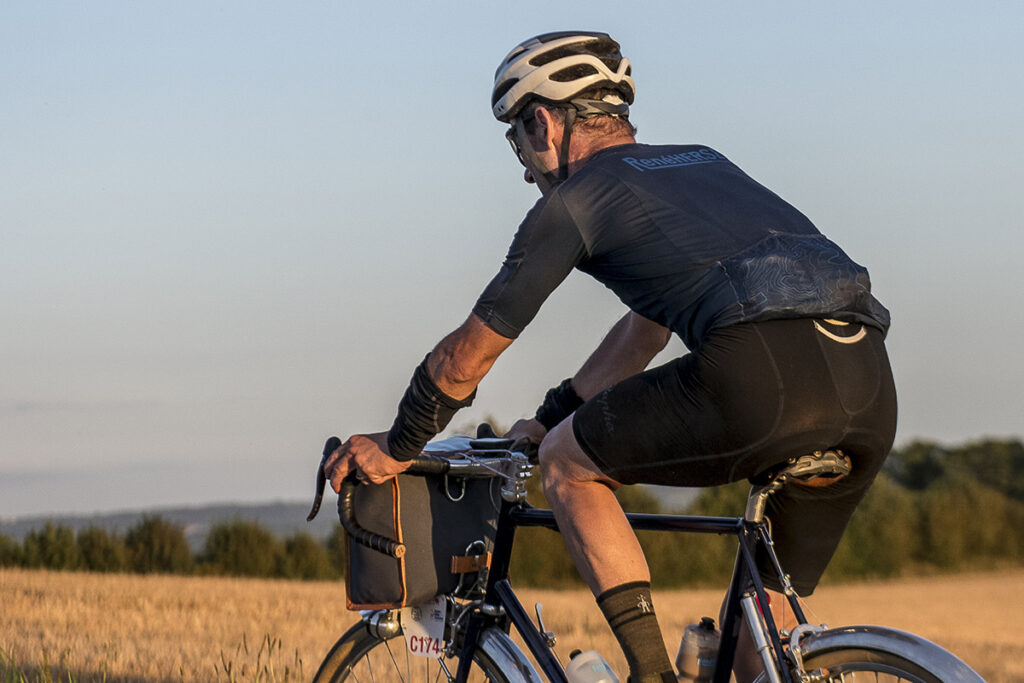
Handlebars
Often overlooked is the comfort of the handlebars. Riding long distances at lower power outputs than the pros, we put more weight on our arms and hands—and we hold the bars for much longer than a Tour de France stage. Modern handlebars tend to be short and shallow. Racers ride almost exclusively on the hoods, as that’s the most aerodynamic position on modern bikes. Today’s races and stages are so fast that racers need only that one position—until they sprint for the finish line, when they finally use the drops.
For long rides and races, riding in the same position all the time will not just hurt my hands and shoulders, but also fatigue my back. Drop bars were originally invented by racers to offer different positions for different power output. Human anatomy hasn’t changed over the last 100 years—the reason modern bars are different is simply that racing has changed a lot. But those changes—higher speeds and races without lulls in the action that you see in old Tour videos—don’t apply to long-distance riding.
The best long-distance handlebars take their inspiration from the past, when races were much longer and speeds were more variable. That’s also when handlebars were long (reach) and deep (drop), to provide room to roam, so riders could assume different positions for different speeds. In Paris-Brest-Paris, I may find myself hammering into a headwind while I’m feeling good, but then I’ll go through a lull a few hours later, and need to sit up while I soft-pedal for a while.
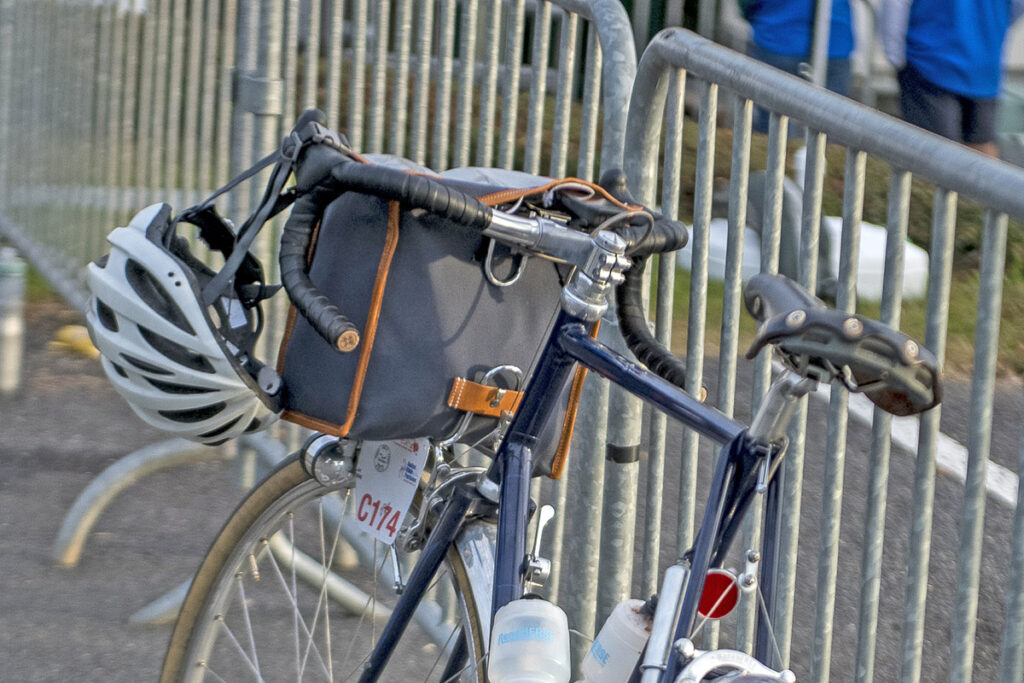
You may have noticed that the bars of my PBP bike have an upsweep. This shape is traditionally called ‘Randonneur’—even though it actually originated with Tour de France racers in the days when roads were rough and stages were long. There’s a reason for the upsweep: Look at your hands as you curl them around a handlebar—you’ll notice that your palms are not flat, but form a cup.
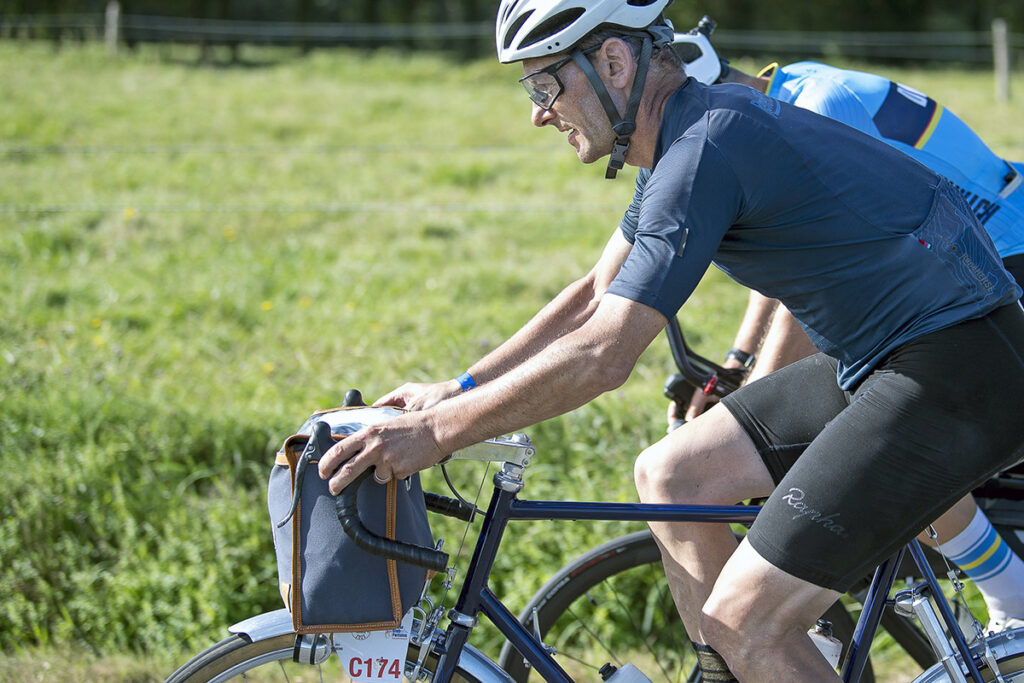
The upsweep of the Rando bars means they aren’t flat, either, so they fit perfectly into the cup formed by your hand—when you hold them just behind the brake levers, as I do in the photo above. That perfect fit eliminates pressure points and is far more comfortable than holding the brake lever hoods. For me, it’s the secret to long rides without any hand pain.
I use these bars not just in brevets, but also in 24+ hour gravel races like Unbound XL and the Arkansas High Country Race. They are as comfortable on gravel as they are on pavement. In fact, I no longer use gloves in these races, because I’ve found that gloves can rub my hands and cause blisters. (I also don’t use padded bar tape, as I feel the squishiness detracts from the feedback about how much grip my tires have in reserve.)
However, not all randonneur handlebars are created equal. Many start their upsweep directly next to the stem, so they don’t have that perfect fit for your cupped hands. All they do is raise your bars a bit. Often they are less comfortable than ‘normal’ bars without the rise. (If you need higher bars, raising your stem is a better option.) We tested many different bars before settling on the final shape of the Rene Herse Rando bars. It’s one of those things where ‘almost right’ is actually worse than just a conventional bar with no upsweep.
What about ‘anatomic’ handlebars with flat spots in the drops that are supposed to be more comfortable than curved bars? Those have never worked well for me, because they lock my hands in one position. I find that my hands rarely fit that exact position. That’s why I prefer bars with generous curves, where I can find the perfect spot for my hands, where they rest on the bars without twisting my wrists or shoulders.
When I just want bars for all-day comfort, I use our Maes Parallel bars that offer similarly generous curves without the upsweep. On the Maes Parallel, my hands can roam and find the most comfortable position at any speed. I run those on my OPEN U.P.P.E.R. and on my Firefly. In fact, I’ve done a few 1200 km brevets on those before we developed our Randonneur bars.
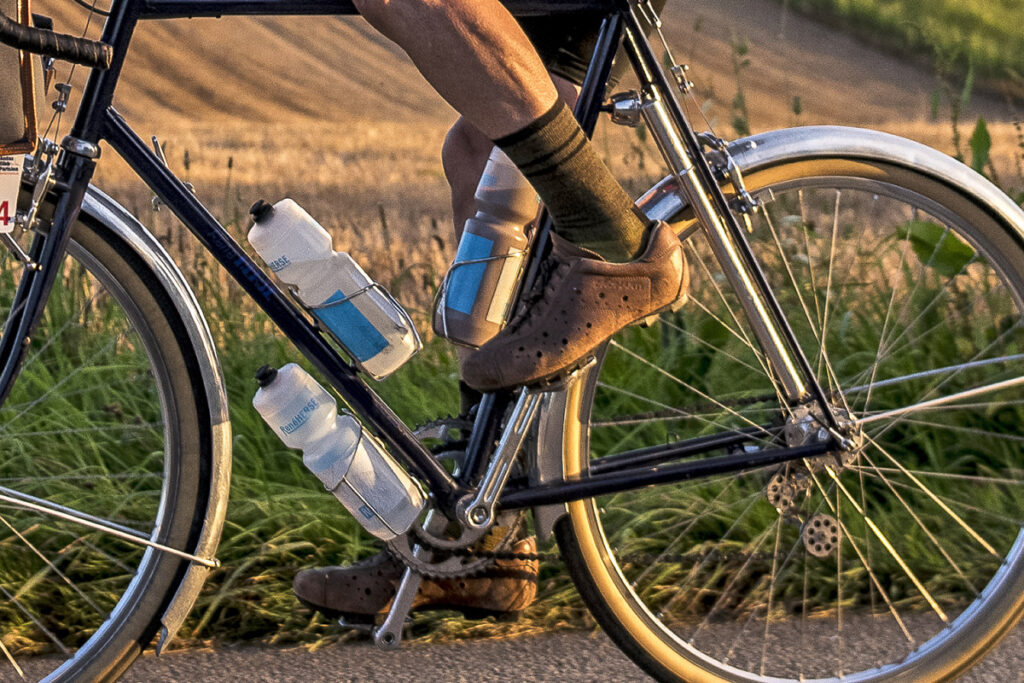
Pedals and Shoes
The last piece of the puzzle are pedals and shoes. This is one place where we’ve got it a bit easier than road racers. We don’t pedal as hard, so we don’t put as much pressure on our feet. Road pedals have large cleats to spread that pressure over a larger area. However, in PBP it’s necessary to walk quite a bit—which is a nice way to stretch your leg. In gravel races, it’s often necessary to portage the bike. That’s why for these events, SPD pedals (and walkable shoes) are the best option.
The perfect shoes have soles that are stiff enough to avoid putting pressure on your feet, but not so stiff that your feet hurt after 24+ hours. Everybody’s feet are different, so shoes are perhaps even more personal than saddles. I have pretty average feet, and I love my Dromarti shoes, which strike that perfect balance of sole stiffness for me. Another big plus are the real leather uppers: They breathe. Synthetic uppers may look shinier, but hot and painful feet can really take the fun out of long rides. More than one gravel pro has confided after a long race: “My feet were killing me.” When I rode ‘modern’ mountain bike shoes with synthetic uppers, I sometimes stopped to put my feet in a creek (or even a puddle) to cool them off and relieve the pain. Fortunately, that’s no longer necessary with the Dromartis.
The laces may look classic, but they actually save a lot of weight, because they distribute the forces over the entire upper of the shoe. Ratchets and buckles require reinforcements that add weight (and are difficult to do with natural, breathable leather). In summary, the Dromartis are lighter, more comfortable and more breathable than most other shoes. That’s why I use them for all my rides, even gravel races. (Rene Herse doesn’t sell shoes, but Dromarti ships world-wide.)
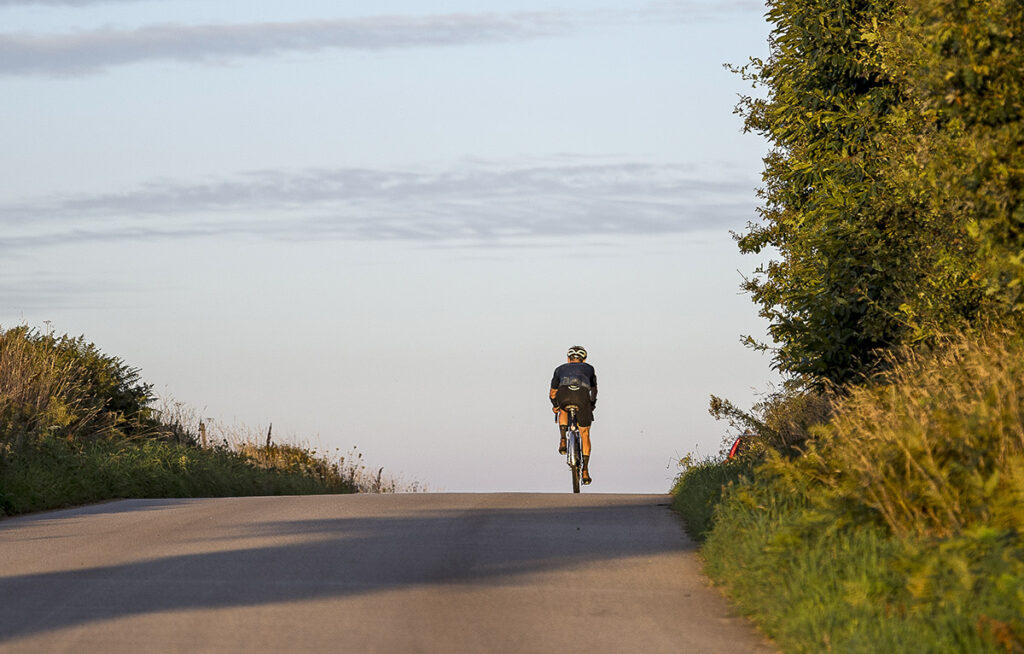
Those are already the secrets behind my pain-free PBP. Of course, there are other elements, too, like cranks with chainrings that give me gears that I can spin without straining my knees. And fenders that keep me dry if it rains… but the essentials are really just the three contact points. As I wrote at the beginning, every rider is different—these are just the things that have worked well for me and the other riders on the BQ team.
The good news is that you don’t need a brand-new bike or anything complicated to ride long distances pain-free. Just think about your tires, your bike fit, your saddle, handlebars and shoes, and you’re set for a ride that continues to be fun for much longer than you’d ever though possible. A comfortable bike is also key to speed in these ultra rides: Keeping stops short is the easiest way to save time—whether you’re working toward your dream time or just want to finish without having to worry about the time limit. Keeping your stops is hard to do when your body aches, but easy when your ride is pain-free.
Even if you have no plans to ride PBP, the things that make a bike comfortable for 60-hour rides work just as well on shorter rides—especially if you don’t have the power of a pro racer who almost floats above the bike. The pros don’t suffer—there’s no need for the rest of us to do so, either.
Further Reading:
- The story of my PBP ride is in the current Bicycle Quarterly. Subscribe now to get your copy, or simply add it to your order of Rene Herse components (there is a prompt when you check out.)
- Rene Herse tires
- Rene Herse handlebars
- Berthoud saddles
- Rene Herse Tire Pressure Calculator
- Our book The All-Road Bike Revolution explains how to make your bike fast, comfortable and reliable
Photos: Nicolas Joly (except Photo 2: Andy Chasteen)


